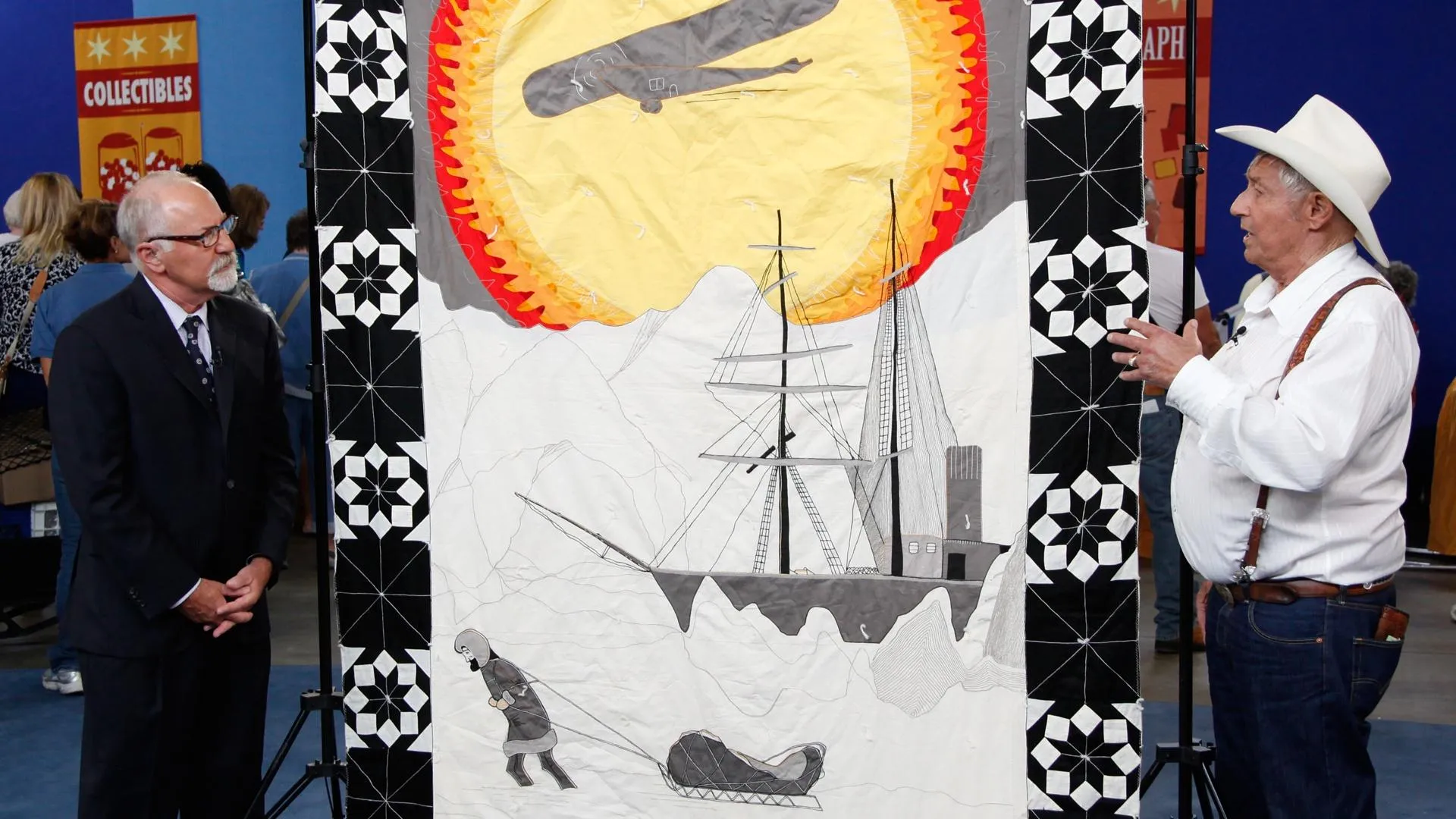HOST: The Black Hills of South Dakota and Wyoming are called Paha Sapa in the Lakota language. We met appraiser John Buxton at Sylvan Lake to discuss some fascinating Sioux objects from the 1800s. John, these items are fantastic, and I can't wait to hear more about them. They're both Plains Indian weapons, correct?
APPRAISER: Exactly. These two weapons are typical of the kind of things that would have been used in the first half of the 19th century. Sculpturally, they're really extraordinary. I'd like you to just handle this for a second. It's really amazing.
HOST: First of all it's nice to be able to actually hold one of these artifacts, but this is...wow. It is so light and balanced, but you can tell, the business end is meant for business.
APPRAISER: And I want you to notice the tacking which is diagnostic for Plains. But also, we have an otter carved in the top.
HOST: Yeah, if you look closely, there's the tail right there, and the head of the otter. Now, you said that this is good for diagnostics, but this was just decorative, correct?
APPRAISER: It was decorative, and they were traded in to the Indians in this area.
HOST: This lets us know it's from this area.
APPRAISER: Exactly. Now we know that this form was used as early as the 17th century in the Northeast, but this particular club dates between 1840 and 1860.
HOST: What's the value of a club like this today?
APPRAISER: I know that the collector paid $35,000 at a tiny little auction.
HOST: For this one.
APPRAISER: Exactly. And so I'm going to say, conservatively, it's $30,000 to $40,000.
HOST: For a similar piece like this.
APPRAISER: Exactly.
HOST: Let's talk about this tomahawk here. Wow, this is just a work of art.
APPRAISER: This is absolutely a smokeable pipe. But I want to talk about this handle. This is called a haft. And notice how it's been decorated here with a hot file that made these file marks all the way. On the end, this is called a spontoon shape. This surface is undoubtedly made by an American blacksmith, and then it was traded to the Indians. This area is called the drop. These black and white beads are called pony beads.
HOST: Why are they called pony beads?
APPRAISER: They're called pony beads because supposedly they were traded in from the East and from Canada on pack animals. Now, where we are, so close to the Missouri River, I think a lot of them were brought in by barges. But it's diagnostic for dating this, because they came in right around 1800. So it helps us date this particular piece 1830 to 1850.
HOST: But there are some beads missing. Does that greatly affect the value?
APPRAISER: On a piece this terrific, this is pretty minor, so, no, I don't think it does affect the value. This pipe tomahawk is worth $60,000 to $80,000 at either a good dealer or at an auction today.
HOST: Amazing pieces of history that have survived, and John, it's always great to talk to you about it.
APPRAISER: This was fun to do this.











